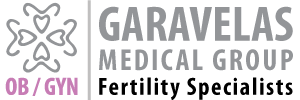An innovative technique against premature menopause that uses svf cells from your adipose tissue
Treatment for premature menopause based on the use of autologous adipose derived cells (ADSCs), i.e. obtained from the fat of the person who will undergo the treatment. It is indicated in case of infertility and interruption of the menstrual cycle.
It restores the ovary functioning and promotes the immature oocytes production. The ability of ADSCs cells to improve both ovary size and endometrial thickness and blood flow in the uterus wall is scientifically proven.
In ovary dysfunction, alteration in extra-ovarian factors, such as gonadotropins, androgen, insulin and intraovarian factors, such as growth factors and cytokines, is associated with poor quality of the oocyte.
Studies suggest low-grade inflammation and oxidative stress are involved in the pathogenesis of ovary dysfunction.
Inflammatory cytokines, such as interleukin (IL)-6 and tumor necrosis factor (TNF)-a, could stimulate androgen production and induce atresia of follicles and ovarian dysfunction.
In patients with ovary dysfunction, ovaries display persistent chronic inflammation with an enormous number of lymphocytes and macrophages, thus improper inflammation causes abnormal folliculogenesis.
Αdipose/fat tissue provides an abundant source of stromal vascular fraction (SVF) cells for immediate administration and can also give rise to a substantial number of multipotent adipose-derived stromal cells (ADSCs). Recently, both SVF and ADSCs have gained wide-ranging translational significance in regenerative medicine.
This technology in conjunction with the platelet lysate (Renovo2) technology in ovarian rejuvenation enhances the activity of the cortical part of the ovaries. The research in this field has proven that ovaries can be “reactivated” for a short period of time and that women suffering from POF or POI or even menopause may reduce their symptoms and restore the ovarian function.
In the ovaries of these patients, also there is abnormal apoptotic regulation that leads to atresia of follicles, follicular cystic formation, anovulation and hyperandrogenism. Oxidative stress and inflammation are the two main pathways associated with the pathogenesis of ovary dysfunction targeting these pathways through agents with dual antioxidant and anti-inflammation potential seems a promising therapeutic strategy.
Procedure
The production process of the current project involves the removal of a small portion of fat tissue (SVF) and few mls of blood. Then, there is mechanical dissociation of the SVF, 2) centrifugation of the dissociated SVF and 3) finally the isolation of the adipose derived cells from stromal vascular fraction. In regards to ‘’Renovo2’’, the production process involves 1) a two-step
centrifugation process, 2) discard of the excess plasma volume and 3)
concentrated growth factors.
The combination of the two components is performed, to form the administrated
product.
The administrated product consisted of Stromal Vascular Fraction (SVF)-derived cells in combination with Renovo2. This product is characterized by a high amount of regenerative growth factors such as TGF-β1, FGF, PDGF, VEGF, EGF, HGF, other proteins with regenerative potential and thus can achieve ovary rejuvenation, through the utilization of specific signalling pathways. Moreover, this set of growth factors and proteins possesses immunoregulatory, anti-inflammatory, antioxidant, and regenerative properties for the ovary microenvironment.
Specifically, SVF consists of several growth factors with regenerative potential. Factors derived from SVF also play important biological roles including enhancing angiogenesis in vitro and in vivo.
It has been shown that the above factors can induce the proliferation of resident and neighbouring cells (rejuvenate microfiche), can drive the differentiation of the progenitor cells, and orchestrate properly a beneficial microenvironment, enhancing in this way the wound healing process and regeneration potential of the damaged tissue In addition, it has been suggested that SVF-derived cells in combination with the Renovo2 can reverse ovarian function and decreased the ratios of over-activated
immune cells via specific signalling pathway utilization.
The PI3K/Akt signalling pathway is critical for follicular activation, oocyte quality, and GC development. Treg cells are vital in the regulation of autoimmunity and transplantation, producing immunomodulatory cytokines such as transforming growth factor β (TGF-β). Further, TGF-β inhibits the expression of interferon-gamma (IFN-γ).
The exceeding IFN-γ levels inhibited ovulation. SVF-derived cells in combination with the Renovo2 transplantation increased the release of anti-inflammatory cytokines and inhibited pro-inflammatory.
Indications
- SVF treatment is recommended in case of:
- Infertility
- Amenorrhea
- Osteoporosis: The reduction in oestrogen levels typical of early menopause puts bone health at
risk - Depression or anxiety: They are related to the risk of infertility and a reduction in the level of oestrogen
Heart disease: Early loss of oestrogen can also affect the risk of cardiovascular events
What to expect?
- Reduction in follicle-stimulating hormone (FSH) levels
- Increased levels of Estradiol (E2)
- Improvement of the weight of the ovary
- Restoration of ovarian function
- Stimulation of follicle formation
- Resumption of menstruation
- Stable and safe results
If you feel that you are a potential candidate and want to be treated, please complete the application form and return it along with your relevant analysis.
In any case we would like to know that we are at your disposal to provide you with
additional information and clarifications.

